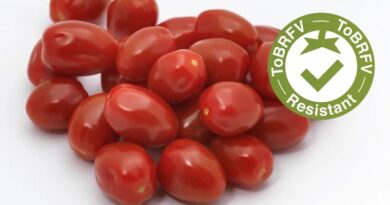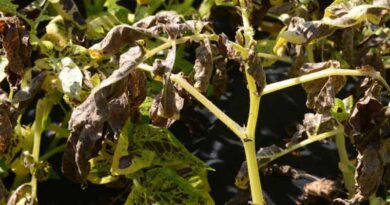Discover Piel De Sapo Melon with Tomato Leaf Curl New Delhi Virus Resistance
26 June 2024, New Delhi: Joining Syngenta’s impressive lineup of cucurbits with Tomato Leaf Curl New Delhi Virus (ToLCNDV) resistance, Bobal piel de sapo melon helps gives growers confidence against this emerging pathogen. Launching first in the Mediterranean, this melon will be shared with growers who want genetic defense against this crippling disease.
ToLCNDV has been found in cucurbit species including squash, cucumber, and melon in key growing areas. It’s especially active in Italy and Spain, but it’s spreading rapidly.
Left unchecked, it can reduce yields and crop quality due to damage caused to leaves and fruits by symptoms of the virus.
Crop losses from ToLCNDV (also called New Delhi Virus) are caused by curled, crinkled leaves, vein swelling, yellow mottling, shortened plant height, and, worst of all, poor fruit set that indicates a near total crop loss in squash, melon, and cucumbers.
Discover Piel De Sapo Solutions for ToLCNDV
In melons, the damage caused by ToLCNDV is especially devastating on the fruits. The plant loses the ability to affectively photosynthesize, resulting in small fruits that cannot be sold or consumed.
“With Bobal, we continue our development program to introduce a variety with resistance to New Delhi,” said Victor Garcia, Syngenta Vegetable Seeds Cucurbit Portfolio manager. “It also includes resistance to powdery mildew and graciano aphids.”
Broad protection against ToLCNDV and other damaging pests means higher yield and quality potential for growers. Our researchers keep this top-of-mind when creating new varieties because, while ToLCNDV is important, it’s not the only pest that can cause yield consequences for growers.
Protect Crops Before Infection Occurs
ToLCNDV is transmitted by white fly Bemisia tabaci and is a Begomovirus. Because it’s transmitted by an insect, and can live in many different hosts, multiple control methods are possible and recommended to reduce the spread and protect current control methods.
Controlling the virus vector (the white fly) is the first step we can take to control or delay getting or spreading the infections and early development of the virus. Consider multiple methods for control, including crop protection products, biologicals and physical barriers like nets in greenhouses or small tunnels in open field crops.
The control gained with resistant varieties provides a high level of efficacy, however. Because of this, Syngenta’s research into new solutions is ongoing in cucurbit species impacted by New Delhi Virus.
Also Read: Mancozeb Market Size to be Worth USD 2651.97 Million by 2032
(For Latest Agriculture News & Updates, follow Krishak Jagat on Google News)
(+80 Million Farming Audience Visits Krishak Jagat’s Hindi Website – Click Here for Website)















